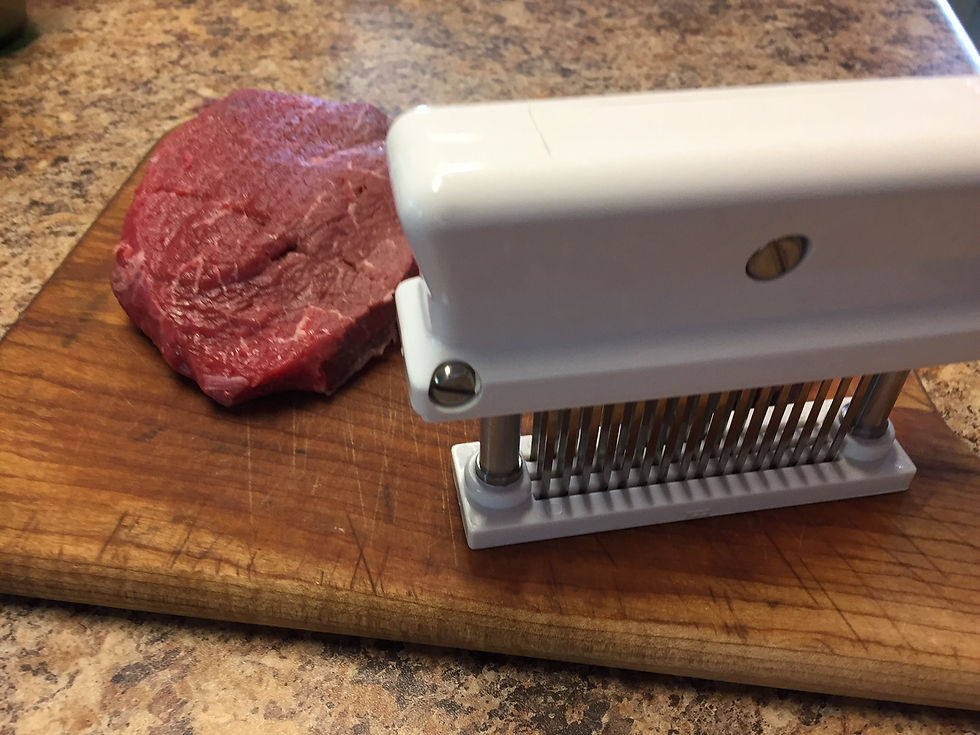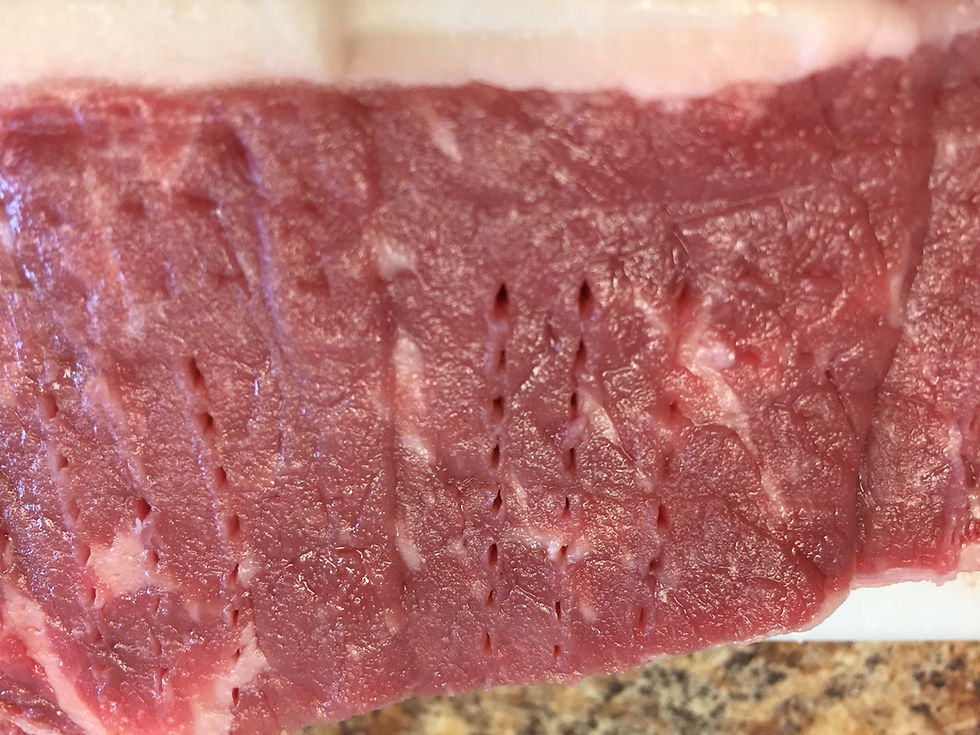Why You May Need a Jaccard™
- bbqbenefits
- Aug 23, 2018
- 1 min read

Before I get into specific steak recipes (I did post one for flank steak on February 8, 2018) I need to bring up one more item - mechanically tenderized meat. The more a muscle is exercised the more connective tissue is developed. The more connective tissue the tougher the meat. There are two types of connective tissue, One converts to gelatin when heated above 160° (pulled pork) and the other type of connective tissue remains tough throughout cooking. The only means of making meat high in the second type more tender is by physically disrupting the connective tissue by slicing it thin across the grain or by mechanically tenderizing it. Mechanically tenderizing is accomplished by pounding the meat with a meat tenderizer (as with cube steak), or by puncturing it with very small knife blades. The latter is done by many beef processors, some butchers, and some restaurants. Mechanically tenderized meat for retail sales must be so labeled as required by the USDA in 2016. This is because pathogens on the meat surface are carried into the meat by the blades. The USDA recommends cooking mechanically tenderized meat to a temperature of 145F (the same as unprocessed meat) and allowing it to rest for 3 minutes to be safe.

The Jaccard™ is a mechanical meat tenderizer for home use. The one pictured below has 48 blades. The punctured holes also enhance the penetration of marinades if used. I Jaccard all beef steaks on both sides, except for tenderloins.

Look closely at the illustration below and notice the small punctures.




























Comments